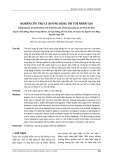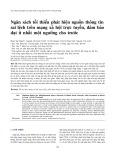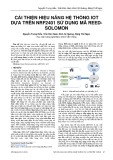Tài liệu Thư viện số
- Crypt Information Security (246 )
- An toàn thông tin (851 )
- Điện tử - Viễn thông (1394 )
- Công nghệ thông tin (3280 )
- Khoa cơ bản (544 )
- Lý luận chính trị (339 )
- Ngoại ngữ (268 )
- GDQP - GDTC (201 )
- Đồ án - Tiểu luận (167 )
- Tài liệu tham khảo khác (526 )
Danh mục TaiLieu.VN
- Mẫu Slide Powerpoint
- Luận Văn - Báo Cáo (346704)
- Kinh Doanh Marketing (67778)
- Kinh Tế - Quản Lý (50036)
- Tài Chính - Ngân Hàng (57809)
- Công Nghệ Thông Tin (143292)
- Tiếng Anh - Ngoại Ngữ (47261)
- Kỹ Thuật - Công Nghệ (137309)
- Khoa Học Tự Nhiên (110530)
- Khoa Học Xã Hội (85272)
- Văn Hoá - Nghệ Thuật (54491)
- Y Tế - Sức Khoẻ (177214)
- Nông - Lâm - Ngư (63475)
- Kỹ Năng Mềm (29084)
- Biểu Mẫu - Văn Bản (27862)
- Giải Trí - Thư Giãn (52535)
- Văn Bản Luật (199483)
- Tài Liệu Phổ Thông (409665)
- Trắc Nghiệm Online (213578)
- Trắc Nghiệm MBTI
- Trắc Nghiệm Holland
Tài liệu nổi bật
Đăng nhập
Bộ sưu tập nổi bật






